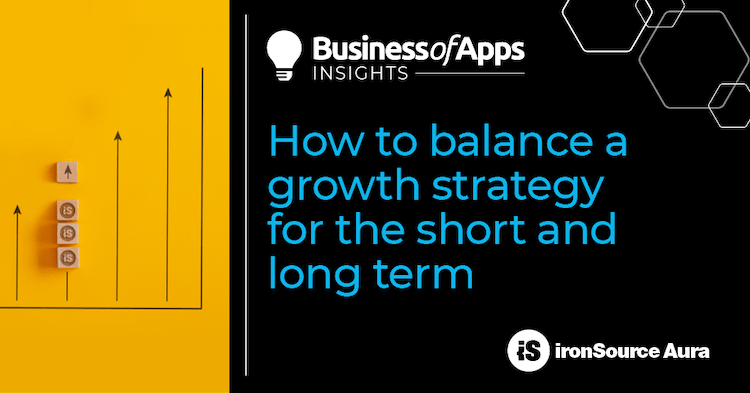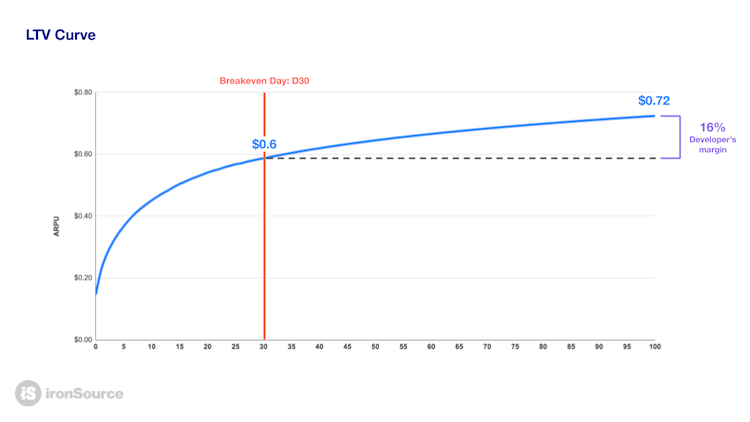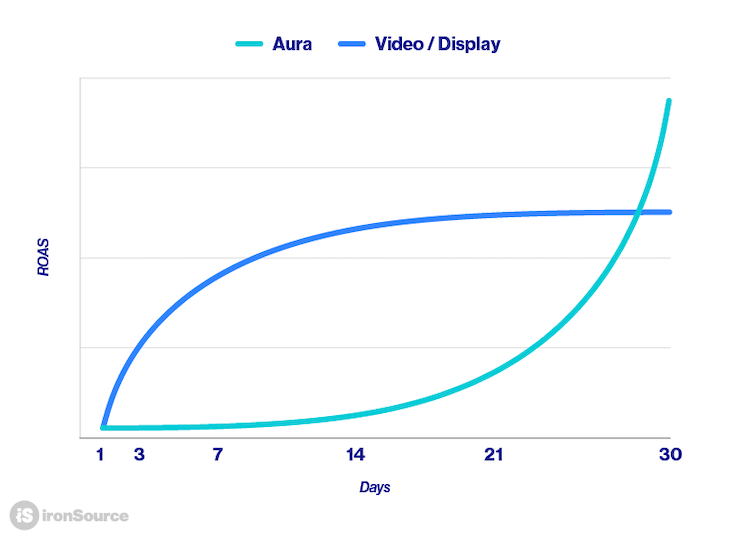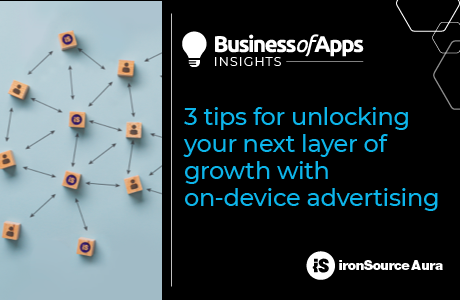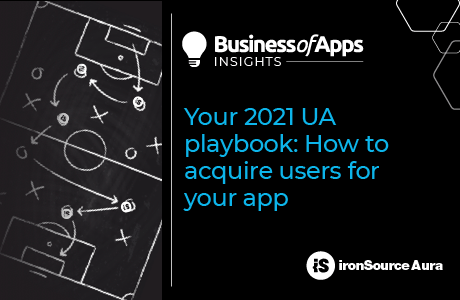User acquisition goals change all the time – factors like seasonality, revenue targets, and expansion plans can all affect your strategy. Planning for both short-term and long-term growth can help adjust for all of these variables while maintaining profit and scale over time. Instead of choosing either short-term or long-term growth channels, savvy UA managers can create a strategy that balances both types.
However, understanding what goal is right for what channel is a challenge – it requires understanding the LTV curve of your own app, and also on each of the media sources you’re running with. Below, I go through what short-term and long-term growth channels look like and when and how to use each so you can maximize growth.
The right time to use channels that yield short-term growth
For many UA managers, short-term growth goals take the majority of their campaigns’ focus, because they’re seeking more revenue, faster. On growth channels that yield results in the short-term, users are shown ads for apps that are most likely to interest them right now – they’ll click on the ad and download when their intent to use the app is at its highest and they’ll engage with it immediately. However, the frequency that users engage with the app and their stickiness can tend to drop over time. This creates an LTV curve that initially increases exponentially then flattens.
That early peak in the curve is where you’ll earn some serious revenue to fund both current and future operations quickly – which is helpful when you’re new on the scene and want to generate a lot of installs or increase cash flow now. So looking at D1, D3, and D7 KPIs is a best practice for growth platforms that have a quick conversion period and an LTV curve like this.
A simplified look at a high-intent buying journey would be if you’re in the market for new workout sneakers. You’d do a quick Google search for “running sneakers”, see paid ads for sneakers appear at the top of the results page, tap, and make your decision on which to buy. That quick conversion happened because your purchase intent was high in that moment – and that rapid decision-making process is also why advertisers should look at early-stage KPIs on short-term growth channels.
Facebook and Google are very often used to power short-term growth. They have sophisticated automation features and handy algorithmic optimizations that can target paying users who will convert quickly. Their predictable LTV curves can help measure your impact and predict profitability more accurately when looking at D1, D3, and D7 KPIs.
When growth channels with long-term results are your best bet
Mixing those growth channels that help you hit short-term KPIs with channels that can drive long-term growth and engagement is where the real magic happens. This will allow you to achieve scale in the short run while maintaining profitability in the long run. Typically, apps that have longer conversion periods between when a user installs them and engages – like vacation booking apps and transportation apps – especially need long-term channels that mirror the trajectory of their LTV curves.
On long-term UA channels like on-device placements on OEM and carrier inventory, the time between when a user installs an app and engages with it is longer. When they first install the app, they don’t necessarily intend to open and use it. But, when the time comes where they do want to use it, the app is already installed on their device so it’ll be their first choice – and they’ll continue to rely on it into the future. This type of user behavior creates an S-shaped LTV curve that starts low then increases over time.
Take a classifieds app as an example. When a user first unboxes their device and opens the app for the first time, it may just be to explore it – they may not be buying or selling anything yet. Then, two months later when they’re moving to a new apartment and they want to sell furniture, they’ll choose to list their pieces on the classifieds app already installed on their device. They’ll then likely do the same for every other time they’re looking to buy or sell items. These channels are a good fit when immediate engagement isn’t the goal – scale, value, and loyalty in the long-run are the advantages here. If you’re expecting results on D3 like your other channels, you won’t see much growth or momentum yet. Like the LTV curve shows, it takes more time for the user to engage and start driving value, so it’s better to look at D30 and D60 instead.
Generating scale, revenue, and engagement in the long-run on these types of channels in addition to the ones that produce results in the short-term can offer UA managers a great way to connect with more users. But those longer LTV curves means advertisers should optimize campaigns based on KPIs later in the curve than growth channels with shorter conversion periods. Setting longer attribution windows and looking at D30 and D60 goals are best practices on channels like these. This ensures that you can correctly credit the install and measure the efficacy of your growth strategy accurately.
Get the best of both worlds
An effective UA and growth strategy combines channels that produce short-term and long-term results. You need them both to drive growth for your business in both the short and long run. They also complement each other – generating revenue and maintaining steady cash flow now via the channels with shorter conversion periods can fund your long-term strategy to help you scale and maximize profitability.



